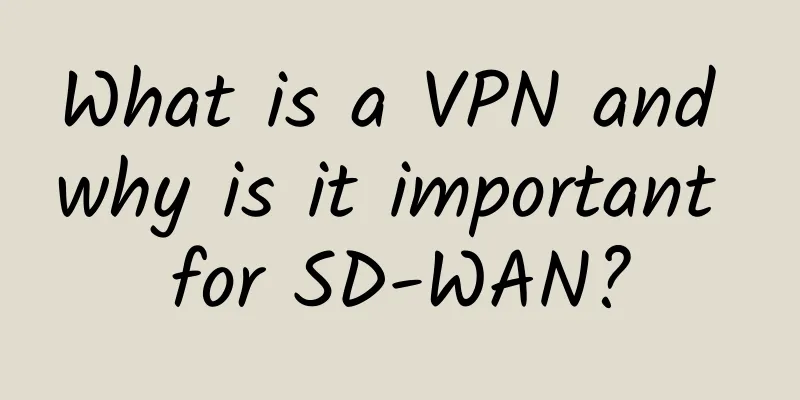Blockchain subverts the underlying architecture of the financial industry and opens a new era of value interconnection

|
Blockchain is essentially a decentralized database and the underlying technology of Bitcoin. Blockchain is a series of data blocks generated by cryptographic methods. Each data block contains information about a Bitcoin network transaction, which is used to verify the validity of the information (anti-counterfeiting) and generate the next block.
In recent years, Internet finance has achieved rapid development with better user interfaces, segmented market positioning, favorable economic environment and regulatory policies, but has not yet touched the underlying logical architecture and basic IT facilities of the financial industry. The emergence of blockchain will truly establish "decentralized" trust from the basic technical level, subvert the traditional financial credit center service model, realize the real-time transmission of value on the Internet, and thus open a new era of value interconnection. Blockchain can realize a trusted data sharing mechanism Blockchain is a combination and upgrade of existing technologies, not a new, single technology. From the perspective of central control and information disclosure, blockchain can be divided into public chain, alliance chain and private chain. Compared with the full openness and publicity of public chain, alliance chain and private chain allow multiple or single centers to control the scope of participating entities and the scope of information disclosure. Since the financial industry must strictly control the scope of disclosure of transactions and information, and has access requirements for participants, alliance chain and private chain are more applicable to the financial industry. Since 2015, alliance chain and private chain have developed rapidly, providing strong technical support for the implementation of blockchain financial applications. In terms of impact, blockchain can establish decentralized trust from a technical level, which will have a subversive impact on the institutional foundation and participant relationships of the existing financial system. Currently, the financial system is built on three basic institutional frameworks: First, commercial trust that relies on legal provisions; The second is the asset transfer transaction that is implemented by an independent third party as a credit intermediary; The third is the transaction settlement and clearing handled by a centralized clearing agency. In the future, blockchain can solidify the basic systems and transaction rules of the existing financial system in the underlying protocols, promote the standardization and automation of underlying logic and the distribution of high-level business applications, realize decentralized and secure transfer of value, and significantly reduce the complexity of industry risk operations and management costs, thereby effectively improving the operating efficiency of financial institutions and lowering industry entry barriers. Blockchain application scenarios are rich and will become a standard feature of financial institutions in the future Whether a technology can find the right scenario is the key to its survival. In recent years, relevant domestic and foreign companies have explored some application scenarios based on their business, but many companies are still in a state of constant trial and error. In fact, considering the characteristics of blockchain such as decentralization, immutability, security and reliability, activities that directly or indirectly rely on third-party guarantee and trust institutions, such as financial services, credit reporting and ownership management, cross-border trade, and resource sharing, will all benefit from blockchain technology. From the perspective of the financial sector, where the application scenarios are the most mature, blockchain can help commercial banks systematically solve the pain points and chronic problems of the entire business chain. In the past two years, the number of financial institutions participating in blockchain exploration has continued to increase, and they have actively carried out various applications. Specifically, the financial industry has explored blockchain applications in a variety of ways. First, various financial giants have set up blockchain laboratories to explore blockchain application scenarios. The second is to carry out in-depth cooperation with financial technology companies to improve the "pain points" of internal business and processes. Banks and financial technology companies cooperate in various ways, including project cooperation, strategic investment and the establishment of joint ventures. The third is to establish a large blockchain alliance across institutions and industries to study and formulate blockchain industry standards and protocol frameworks in the financial field. Substantial impact will take time Although blockchain technology has made great progress, it still faces some challenges in its application: ***, blockchain technology still faces problems such as low computing performance, large space occupation, poor algorithm flexibility, and inability to settle on a net position. Currently, its application is mainly limited to virtual currency, preliminary transaction settlement, and information notarization. Second, regulation is still in a state of ambiguity. As the technology has not yet been finalized, regulatory agencies in various countries have different attitudes: developed countries such as the United Kingdom and the United States are actively promoting it, while many countries are unclear about their attitudes, and some countries are cautious; Third, financial institutions do not have a deep understanding of blockchain and have a weak willingness to use blockchain technology. According to a PwC survey, more than half of bank executives do not know much about blockchain or do not know how to deal with it. At the same time, the comprehensive use of blockchain technology requires the reconstruction of IT architecture and business processes, and the investment of huge costs, which will encounter internal resistance from financial institutions. In the future, blockchain technology and the market will mature rapidly and become the standard IT infrastructure for financial institutions, thereby reshaping the financial ecosystem. Financial institutions must form clear strategic thinking as soon as possible, formulate strategies, and actively carry out investment layout and experimental exploration in order to better adapt to industry development trends and become leaders in reshaping the industry landscape. |
<<: Artificial intelligence builds an iron wall of network security
>>: Enterprise router purchasing: Start by reviewing border routers
Recommend
The digitalization journey of Hengshun
[[395022]] In 1840, during the reign of Emperor D...
TCP waves four times: Why four times? The principle is revealed!
introduction Hello, everyone. I am your technical...
IDC: The global enterprise WLAN market grew strongly in the second quarter of 2021, with revenue increasing 22.4% year-on-year to US$1.7 billion
[[422860]] According to IDC's quarterly globa...
Which router has the best wall penetration effect? Wireless router pit prevention guide
When buying a wireless router, the first thing to...
Forecast of new technology trends such as 5G/NB-IoT/LTE-Cat1/LoRa/Bluetooth/WiFi
Regarding the Internet of Things, the importance ...
CloudCone: $1.99/month KVM-768MB/15GB/3TB/Los Angeles MC Data Center
CloudCone's 2021 flash sale has started again...
Don’t abuse HTTP cache anymore! Here’s a recommended best practice for cache settings!
When setting up cache, everyone may consider it f...
Four questions to help you understand what DCIM is?
[[126709]] Question 1. What is DCIM? DCIM stands ...
What is the 5G Open RAN Policy Alliance established by Microsoft, Google, Samsung and other giants?
According to foreign media reports, the Open RAN ...
The Ministry of Industry and Information Technology interprets eight hot spots in the development of industrial communications in the first quarter
On April 25, the State Council Information Office...
Hybrid office becomes a trend. Cisco uses intelligent technology to improve office experience
According to the survey results of Cisco and a th...
IDC: Global edge computing market will reach $250.6 billion in 2024
Industry data: Gartner conducted a survey and int...
UCloud: CDN traffic package 100GB starts at only 1 yuan, unlimited usage time, 20GB cloud storage + 20GB/month download volume for free
Last month we shared information about UCloud'...
Former NASA chief joins satellite internet company Viasat
According to foreign media, former NASA administr...
Five-minute technical talk | Semantic communication technology helps build a safe countryside
Part 01 Semantic Communication Technology The rap...









